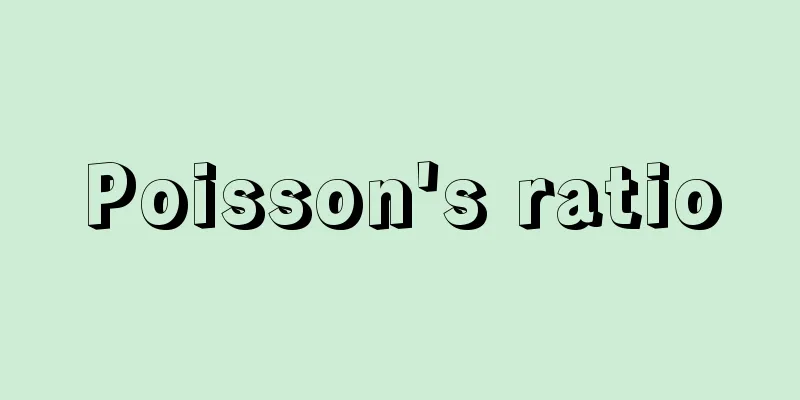Stratum (English)

|
It is a rather ambiguous concept, being used on the one hand as a superordinate concept of caste, status, and class, and on the other hand as a grouping of people who occupy the same position. It usually means each layer that constitutes social stratification as a stratified and graded structure of society. It is therefore a gradational division of a group of people who occupy roughly the same position in a continuous whole that is social stratification, and is an arbitrary category and operational concept used to internally clarify the composition or structure of society, and to interpret and give meaning to the characteristics of the consciousness and behavior of individuals who constitute each layer. The manifestation of class is diverse. For example, the social hierarchy in rural areas is a hierarchy based on land ownership and family status, and each class (landlords, old families, self-cultivating farmers, tenant farmers, etc.) is evaluated differently according to their unique lifestyles and behaviors. In big cities and society as a whole, a hierarchy based on occupations and standard of living, such as upper, middle, and lower classes, exists, or is recognized, though it is a rough one. In corporations (and among the working class), stratification based on seniority by size and skill can be seen (large corporation, small and medium-sized enterprises, micro-corporation workers, senior workers, ordinary workers, etc.). These hierarchies are prestige rankings of superiority and inferiority based on the social respect given by others and the prestige that one can enjoy and demand from others, and this ranking of prestige (discriminatory evaluation) is based on one or all of the following: economic factors (affecting consumption) such as property, income, and standard of living; social and cultural factors related to lifestyle and attitudes such as sect, lineage, occupation, educational background, and culture; political factors such as position, influence, and personal connections. The determining factors of the prestige ranking of hierarchies, that is, superiority and inferiority, nobility, and lowliness, are social and culturally reworked factors rather than purely economic factors, even when property, income, and living arrangements are issues, and hierarchies as prestige rankings are essentially distinct from classes that involve power relations of exploitation and exploitation, and domination and domination, based on ownership and non-ownership of the means of production. Of course, the difference between stratum and class does not end there. In the stratification theory of American sociology, which is fundamentally opposed to the class theory of Marxism, since society is a system of division of labor, it is inevitable that society will differentiate into several stratums throughout history, and class differentiation is an essential structural and functional requirement for society to continue and maintain its integrity. The integrative factors of stratum are emphasized as opposed to the divisive and disintegrative factors of stratum. At the same time, stratum is a subjective phenomenon, not rooted in an objective economic structure like class, in the sense that a discriminatory social evaluation (rating) is added to the social differentiation of status and role. Moreover, stratum as a prestige order based on this discriminatory evaluation is considered to be a continuum that shares common values and stands in a relationship of mutual harmony or adaptation, unlike classes that are polarized, divided, and opposed. This is because the lifestyles, attitudes, and values of the higher classes are imitated by the lower classes and accepted through the psychological mechanism of anticipating socialization. This psychological mechanism serves a normative function of justifying the prestige hierarchy by imposing unique patterns of behavior and common values on each stratum, and at the same time serves a motivational function of promoting identification with higher stratums and upward aspirations (desire for social advancement) by allowing individuals to experience the expansion or contraction of their ego as they rise or fall in the hierarchy, and feelings of superiority or inferiority over others. The hierarchical levels, which are stages in such a continuous hierarchy of prestige, are rated and classified in the following ways. The first is an external, objective method using indicators such as occupation, income, and educational background, and sometimes indicators such as the area of residence, the type of housing, and the furnishings in the living room. These include socio-economic status scales such as Warner's Index of Status Characteristics (ISC) and Chapin's Living Room Scale. The second is an internal, objective method that determines hierarchical status by integrating the results of ratings by multiple assessors. An example of this is Warner's Participatory Evaluation (EP). The third is a subjective method that asks a person which hierarchical level he or she belongs to and identifies the level based on the answer. This is the stratum identification method proposed by American social psychologist Richard Centers (1912-81). These methods allow us to understand and elucidate everyday hierarchical phenomena by clarifying the outline of the hierarchical structure of the local community or the entire society, the relationships between hierarchical levels, patterns of group participation, and other patterns of thinking and behavior. [Akira Hamashima] [Reference] | | |Source: Shogakukan Encyclopedia Nipponica About Encyclopedia Nipponica Information | Legend |
|
かなり多義的な概念であって、一方ではカースト、身分、階級の上位概念として用いられ、他方では同じ地位を占有する人々のグルーピングとして用いられる。普通には、社会の重層的、段階的な構造としての社会的成層social stratificationを構成する各層を意味する。したがってそれは、社会的成層という一つの連続的全体のなかでほぼ同一の地位を占める一群の人々を他から段階的に区分して設定したもので、社会の構成または構造を内部的に明らかにしたり、各層を構成する個々人の意識や行動の特性をこれによって解釈し意味づけるために用いられる任意的カテゴリーであり、操作概念である。 階層の現象形態は多種多様であって、たとえば、農村における身分階層制は土地所有と家格に基づく上下序列であり、それぞれの階層(地主・旧家、自作農、小作農など)は固有の生活・行動様式によって差別的に評価された。大都市や全体社会の場面でも、上流、中流、下流階層というように、職業や生活程度による上下序列が大まかにではあるが存在し、あるいは意識されている。また、企業体などでは(そして労働者階級の間にも)規模別や技能別年功序列に基づく階層化(大企業・中小企業・零細企業労働者、役付き工・古参工・平工員など)が認められる。 これらの階層は、他人から与えられる社会的尊敬と他人に対して享有し要求しうる威信prestigeの格づけに基づく上下・優劣の威信序列であって、この威信の格づけ(差別的評価)は、財産、収入、生活水準などの(消費面に働く)経済的要因、宗派、家系、職業、学歴、教養などの生活様式や生活態度にかかわる社会的・文化的要因、役職、発言力、人的つながりなどの政治的要因その他のうちの一つまたはすべてに基づいて行われる。階層、つまり上下・優劣、貴賤(きせん)という威信序列の規定要因は、財産、収入、居住形態などが問題となる場合でも、純粋に経済的な要因であるよりは、むしろ社会的、文化的に焼き直された要因であり、威信序列としての階層は、生産手段の所有・非所有の別に基づき搾取・被搾取、支配・被支配の力関係を伴う階級とは本質的に区別される。 階層と階級との違いは、もちろんそれだけにとどまらない。マルクス主義の階級理論に原理的に対立するアメリカ社会学の成層理論においては、社会が分業体系である以上、いくつかの階層に社会が分化するのは歴史を越えた必然であり、また階層分化は社会が存続し統合を維持していくうえに必要不可欠の構造的・機能的要件であるとみる。階級の分裂的、解体的契機に対し、階層の統合的契機が強調される。と同時に、階層は地位や役割への社会的分化に差別的な社会的評価(格づけ)が加えられたという意味で、階級のように客観的経済構造に根ざすものではなく、主観的な現象である。しかも、この差別的評価に基づく威信序列としての階層は、両極的に分裂し対立し抗争する階級とは違って、共通の価値を分有し、相互に調和または適応の関係にたつ連続体であると考えられている。上位にたつ階層の生活様式や生活態度、価値観などは下位の階層によって模倣され、社会化の先取りという心理機制を通じて受容されるからである。このような心理機制によって各層に特有な行動様式や各層に共通の価値観念などを押し付け、威信序列を正当化する規範的機能を営むと同時に、個人に対して階層の上昇・下降による自我の拡大・縮小、他への優越感または劣等感を経験させることを通じて、上層への同一化ないしは上昇志向(立身出世欲)を促進するという動機的機能をも営む。 なお、このような連続的威信序列における段階区分としての階層は、次のようなやり方で格づけされ、類別される。第一は、職業、収入、学歴などの標識、ときには居住地域や住居形態、居間の調度類などの標識による外的・客観的方法であり、ウォーナーの地位特性指数(ISC)、チェーピンのリビングルーム・スケールなどの社会経済的地位尺度socio-economic status scaleがこれに含まれる。第二は、複数の評定者による格づけの結果を総合して階層所属を決定する内的・客観的方法であって、ウォーナーの参与評価法(EP)がその例である。第三は、その人がどの階層に所属するかを尋ね、その回答に基づいて識別する主観的方法であり、アメリカの社会心理学者センターズRichard Centers(1912―81)の階層帰属意識stratum identificationによる方法がこれにあたる。これらの方法によって、地域社会または全体社会の階層構造の輪郭や階層相互の関係、集団参加様式その他思考・行動様式を明らかにすることを通じて、日常的な階層現象を把握し解明することになる。 [濱嶋 朗] [参照項目] | | |出典 小学館 日本大百科全書(ニッポニカ)日本大百科全書(ニッポニカ)について 情報 | 凡例 |
Recommend
Aega antillensis (English spelling)
…[Shigeo Gamou]. … *Some of the terminology that ...
Nagayo [town] - Nagayo
A town in Nishisonogi County in the southern part ...
Valerius Maximus
Roman historian of the first half of the 1st centu...
Bamboo Lady
A cylindrical basket that is hugged and used to sl...
Takadaya Kahei
Year of death: April 5, 1827 (April 30, 1827) Year...
Idea - Kannen (English spelling) idea English
A term referring to the mental representations th...
Arame (fish) - Arame
...A freshwater fish of the Cyprinidae family (il...
Listed products - jojoshohin
Commodities that are traded on the commodity excha...
Duckworm - Duckworm
...In addition, there are tentacles, papillae, do...
Terebra maculata (English spelling)
…[Tadashige Nabe]. . … *Some of the terminology t...
Correct name - Seimei (English spelling) zhèng míng
An ancient Chinese concept of right and wrong. In ...
Jihon Doiya - Jihon Doiya
Also known as Jihon Soshi Wholesaler. A bookstore ...
Saburo Aiko - Saburo Aiko
...At the beginning of the 12th century, Takakane...
EliteBaum
... In the elite tree selection and breeding proj...
Primary Statistics - Ichijitokei
...A sample survey is a survey in which a relativ...








![Seki [Hot Spring] - Seki](/upload/images/67cc022e45e63.webp)
